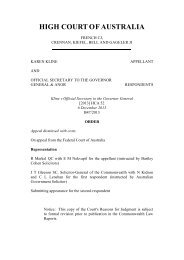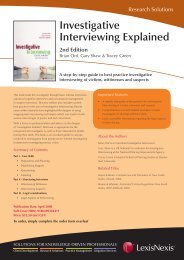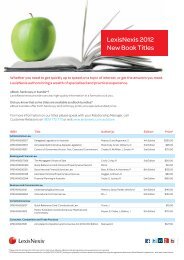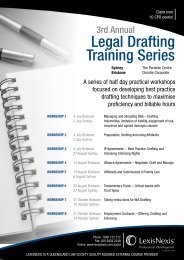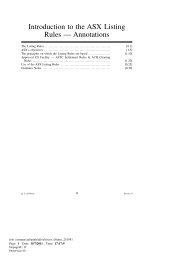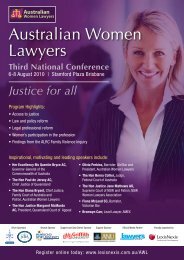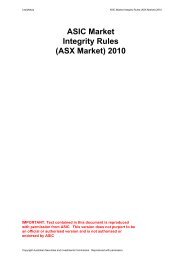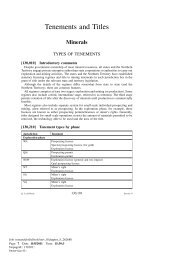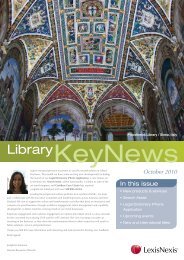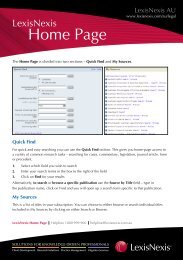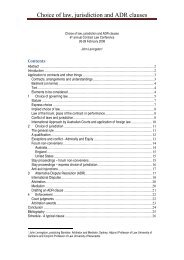Chapter 2 - LexisNexis
Chapter 2 - LexisNexis
Chapter 2 - LexisNexis
Create successful ePaper yourself
Turn your PDF publications into a flip-book with our unique Google optimized e-Paper software.
9.12 Wednesbury unreasonableness• Precision Products (NSW) Pty Limited v Hawkesbury City Council [2008]NSWCA 278. A non-medical case which in part considered section 43A CivilLiability Act 2002 NSW and at [175] ff: ‘A further important consideration isthe content of sub-s 43A(3) and the meaning of the phrase “so unreasonablethat no authority having the functions of the authority in question couldproperly consider the act or omission to be a reasonable exercise of itsfunction.” Such wording can be seen to have its source in what is oftenreferred to as “Wednesbury unreasonableness” from Associated ProvincialPicture Houses Limited v Wednesbury Corporation [1948] 1 KB 223 at 229-230. Regard could equally be had to the formulation of cognate concepts inAvon Downs Pty Limited v Federal Commission of Taxation [1949] HCA 26;78 CLR 353 at 360; R v Connell; ex parte Hetton Bellbird Collieries Limited[1944] HCA 42; 69 CLR 407 at 430; and Buck v Bavone [1976] HCA 24; 135CLR 110 at 118-119. Cognate ideas are also found in the law attending theresponsibility of company directors. The Court there focuses on whetherdecisions made by boards are made honestly in the interest of the company orare of a kind which no reasonable person could have reached: seeShuttleworth v Cox Brothers and Co (Maidenhead) Limited [1927] 2 KB 9 at23-24; Peters’ American Delicacy Co Ltd v Heath [1939] HCA 2; 61 CLR 457at 481; and Wayde v New South Wales Rugby League Limited [1985] HCA68; 180 CLR 459 at 469-470. While these are different areas of humanendeavour, formulations of the kind used in these cases, whether it be inpublic law, the law of business or the law of torts are attempts to formulatemore attenuated tests for legitimate activity than by reference to a fixedstandard of reasonable care. Whether it is appropriate to describe s 43A asencapsulating the blunt expression of “gross negligence” is a matter fordebate. However, it is plain that the drafter of s 43A was attempting toameliorate the rigours of the law of negligence. …...’9.18 Apologies• Dovuro Pty Ltd v Wilkins [2003] HCA 51; 215 CLR 317. Consideration ofthe extent to which a court may interpret an apology or admission asdetermining liability or assisting in a determination of liability.9.21 Duty to rescue• R v Natalie Burns [2009] NSWDC 232. Consideration of an unusualcircumstance under the criminal law, in which a duty to rescue may exist. Seeat [31]:o ‘Notwithstanding the restraint which courts exercise in this area of thelaw, I am satisfied that while it is necessary for me to avoid engagingin judicial legislation by asserting a general principle analogous tosection 155 of the Northern Territory Criminal Code Act, nonethelesson the facts in the present case I am satisfied that I can and should statethe law of New South Wales to be as follows: “If a person voluntarilyinvites or permits potential recipients to attend his or her home for thepurpose of a prohibited drug supply transaction where the drugs are to



